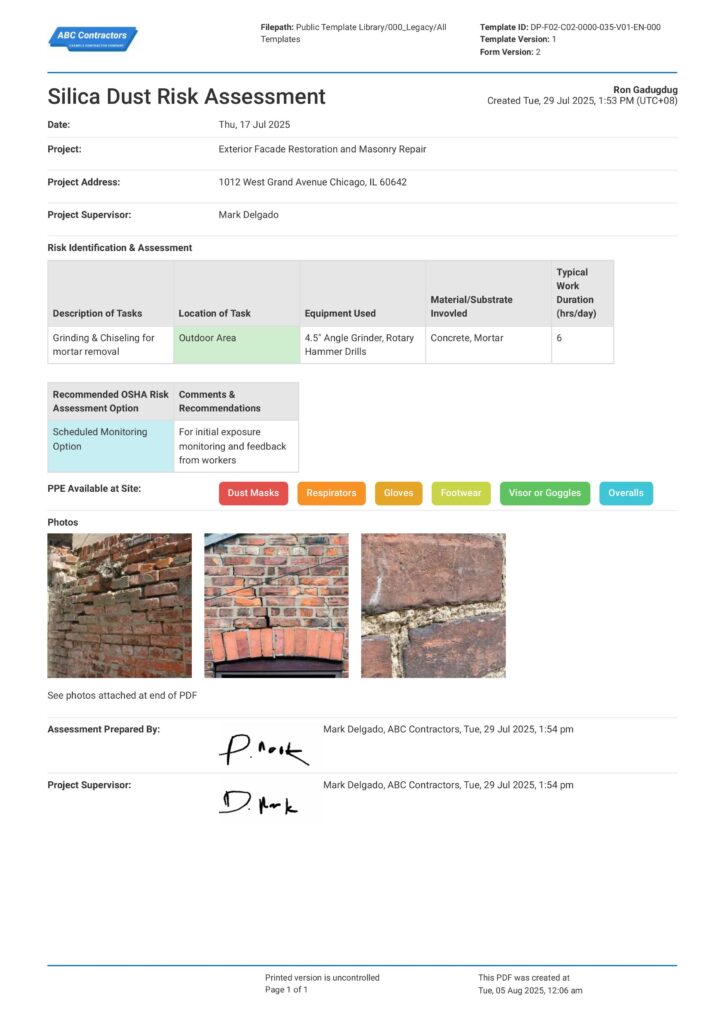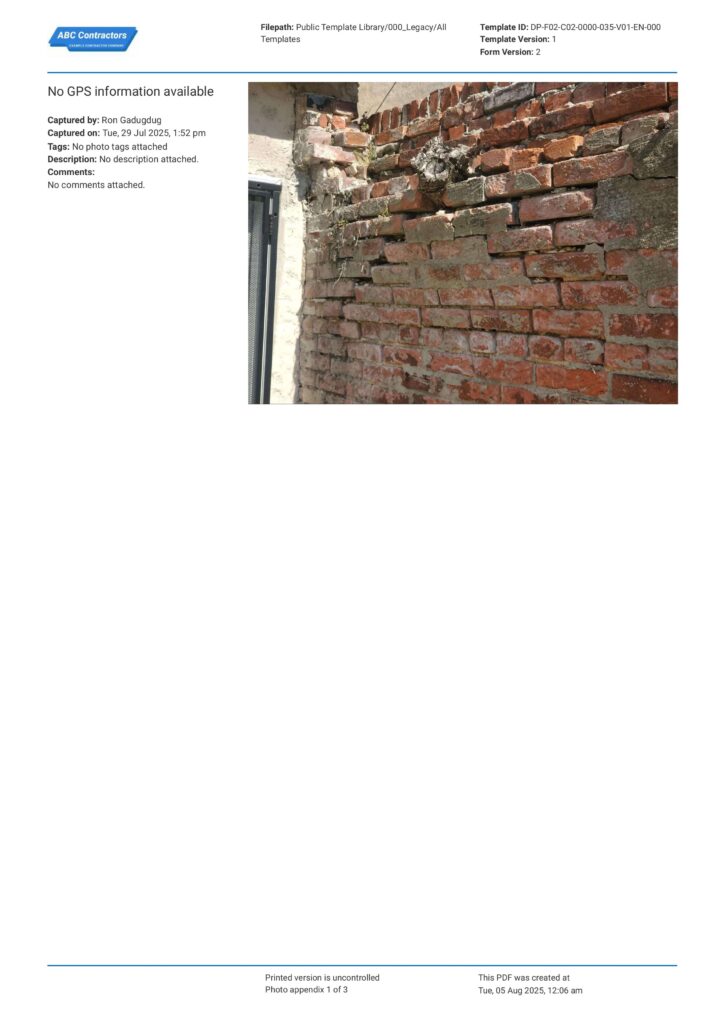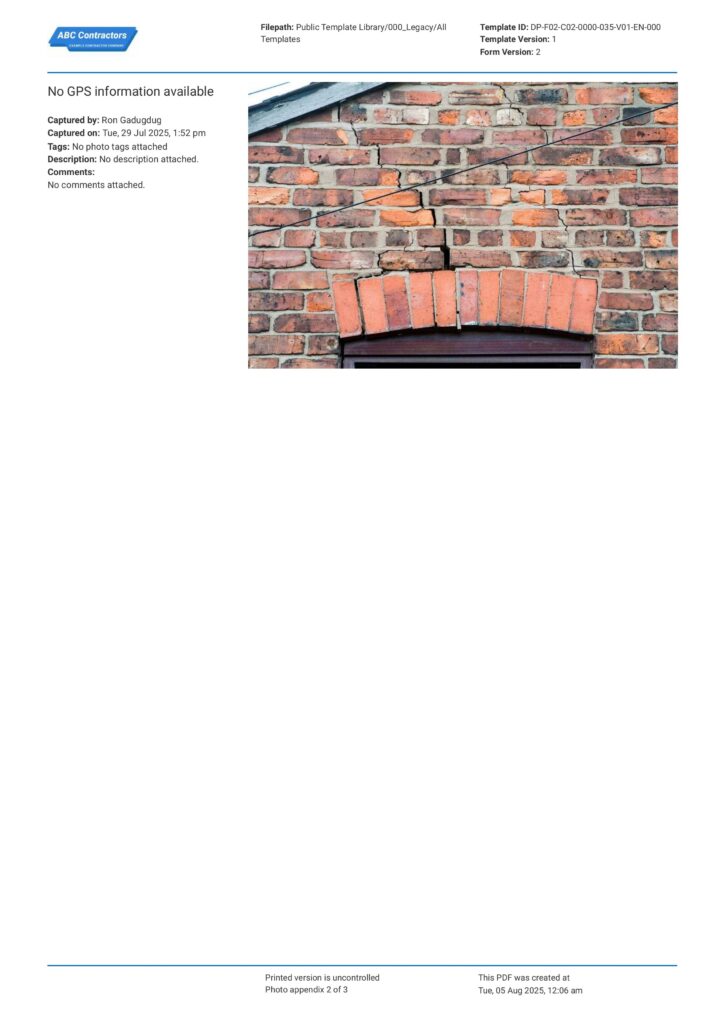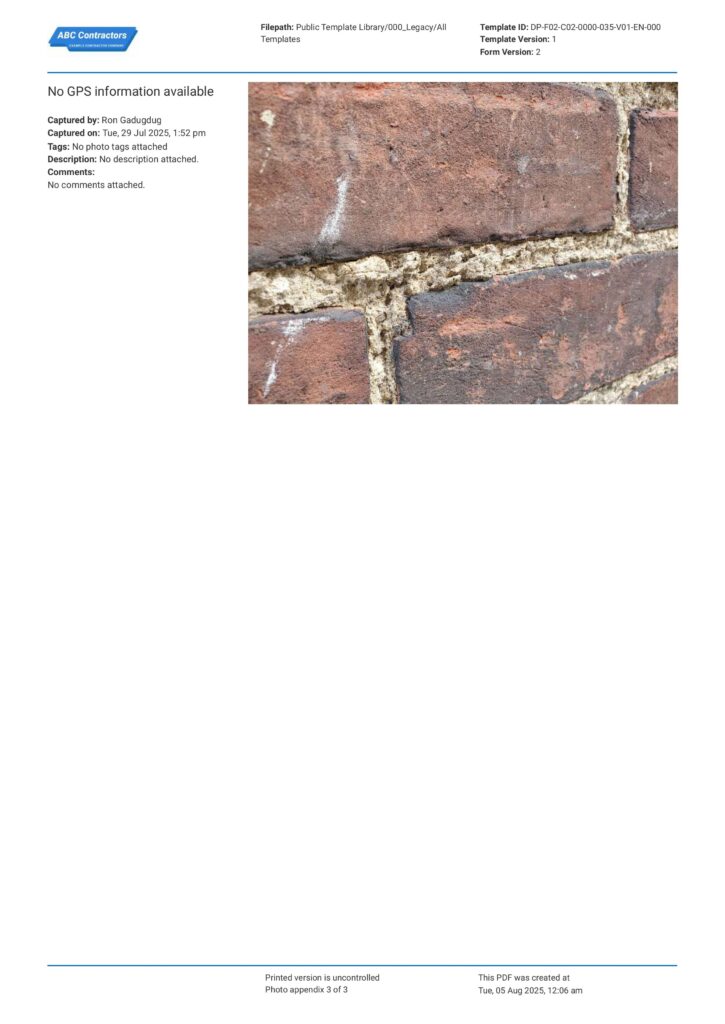Silica Dust Risk Assessment Template
Start with a free 30-day trial. No credit card required.
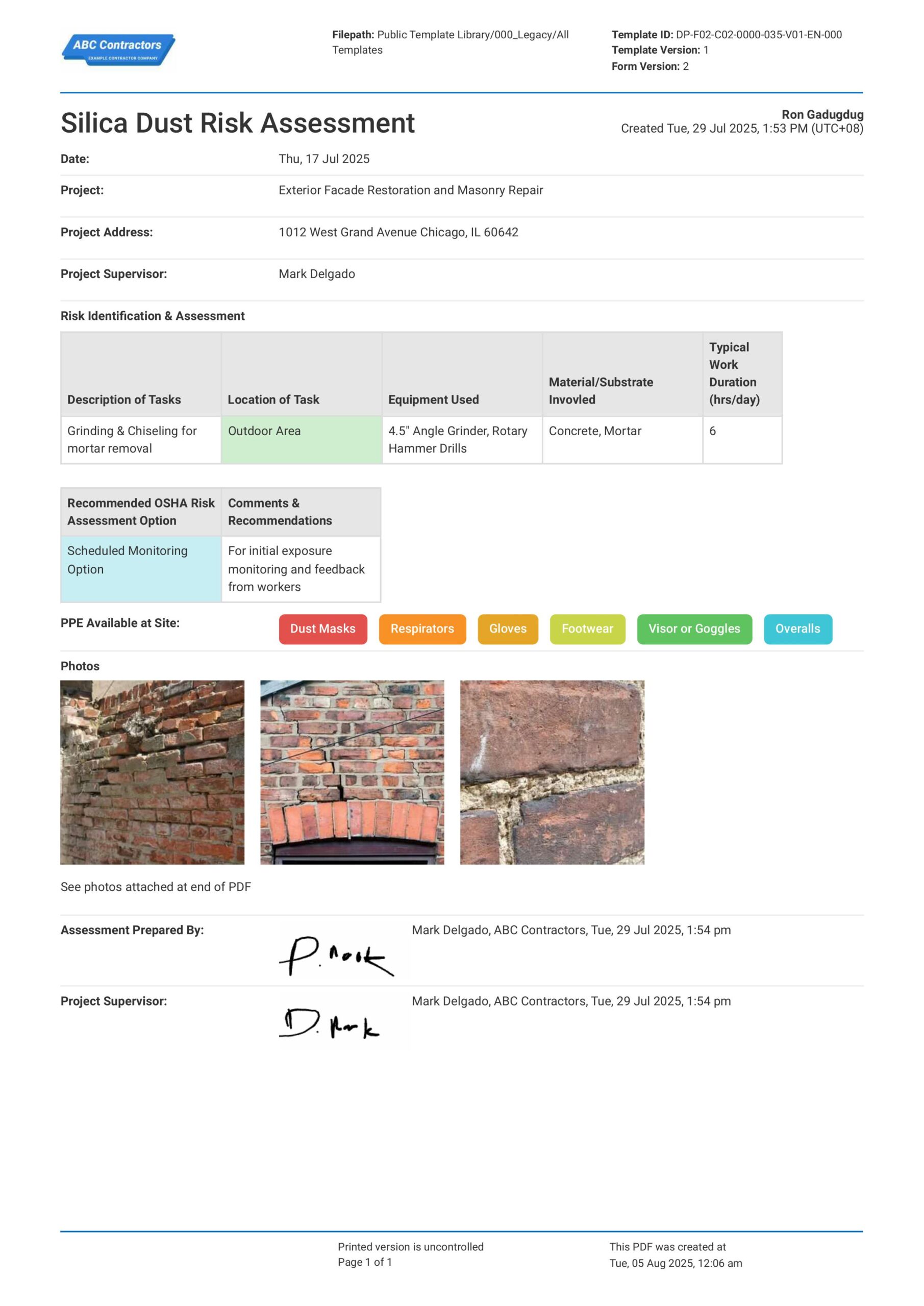
~10,000 employees
~500 employees
~10 employees
~25,000 employees
~200 employees
~1,500 employees
~20 employees
What is a Silica Dust Risk Assessment?
A Silica Dust Risk Assessment is a process that primarily aims to evaluate a job site or task with potential risk of exposure to harmful amounts of Respirable Crystalline Silica to workers and other parties, basically for silica dust control. Employers whose workers are reasonably expected to be exposed to Respirable Crystalline Silica levels above the action level (AL) of 25 μg/m³ averaged over an 8-hour time weighted average (TWA) are required by OSHA to perform exposure risk assessments.
These Risk Assessments also serve as means of transparency with the workers, as employers are also required to inform them of the results in the form of a written notice five days after completion of the assessment. Further, when an employee is found to be exposed to levels above the permissible exposure level (PEL) identified by OSHA as 50 μg/m³ averaged over an 8-hour TWA, the employers are also required to perform corrective action to reduce their exposure and to continue monitoring exposure levels until the task is completed.
Compare this risk assessment for silica dust to forms created on Word, Excel, and other traditional formats
Use this Silica Dust Risk Assessment template for free.
How to Conduct a Silica Dust Hazard and Risk Assessment
Performing a proper Silica Dust hazard assessment is critical to the health and wellbeing of your team and ensuring workplace safety. In Table 1 of the 29 CFR 1926.1153, OSHA lists equipment & tasks that are commonly performed that have shown to produce large amounts of silica dust, and the corresponding exposure control measure to adequately protect the workers during the performance of the task. OSHA goes on to state that if the employer complies with the control measures they listed, they no longer need to perform further exposure assessment or air monitoring.
However, there may be times when a task may not be found in OSHA’s list, or when an employer cannot perform the noted engineering control, housekeeping task, or provide the recommended respiratory protection. In these situations, OSHA has required employers to perform Alternative Exposure Control options to ensure workers are still afforded quality protection. Namely, these are the Performance Option and the Scheduled Monitoring Option.
- Performance Option - The employer shall assess the 8-hour TWA exposure for each employee on the basis of any combination of air monitoring data or objective data sufficient to accurately characterize employee exposures to respirable crystalline silica.
- Scheduled Monitoring Option - The employer shall perform initial monitoring to assess the 8-hour TWA exposure for each employee on the basis of one or more personal breathing zone air samples that reflect the exposures of employees on each shift, for each job classification, in each work area.
OSHA Silica Dust Standards
Under the U.S. Occupational Safety and Health Administration (OSHA) regulations 29 CFR 1926.1153 (for construction) and 29 CFR 1910.1053 (for general industry and maritime), employers are required to identify, assess, and control exposure to airborne silica dust that may arise from tasks that involve drilling, cutting, or crushing material like concrete and stone (coined as OSHA silica dust regulations). Here is a run-down of the most critical points in their instruction:
Compliance with Table 1 in 29 CFR 1926.1153
OSHA lists commonly performed tasks and equipment in Table 1 of 29 CFR 1926.1153 and their recommended exposure controls and respiratory protection standards that are to be implemented during execution of these tasks.
Exposure to Silica Dust Risk Assessment and Monitoring (if non-compliant with Table 1)
When non-compliant with the recommended exposure controls in Table 1, employers are required to perform their own risk assessment and monitoring via Performance Option or Scheduled Monitoring Option
Methods of Compliance
OSHA lists other requirements which also serve as exposure controls such as details on recommended Engineering and Work Practice Controls, Written Exposure Control plans, Inspection and Citation guidelines, and appointment of a competent person to implement these guidelines.
Housekeeping Practices and Area Restriction
Prohibitions on housekeeping practices like dry sweeping and dry brushing, while encouraging use of oil or wax based dust suppressing sweeping compounds.
Medical Surveillance for Exposed Workers
For general industry/maritime, medical surveillance is required for workers who are exposed to silica dust levels above the AL for 30 or more days a year. For construction, medical surveillance is required for workers who are required to wear respiratory protection by the silica dust standards for 30 or more days a year.
Communication of Hazards
Employers are required to properly communicate hazards regarding respirable crystalline silica in the form of seminars and training, and other means such as visible warning signs.
Recordkeeping using a Silica Dust Risk Assessment and other documents
Employers are required to create, preserve and maintain accurate records of air monitoring data, objective data, and medical surveillance records (as needed).
What Happens If You Inhale Silica Dust
Respirable Crystalline Silica can cause severe damage to your lungs and other organs when inhaled. This is because the human body cannot naturally process or otherwise expunge silica dust from its system. Once inhaled in large amounts or over a long period of time, it can cause incurable scarring of the lung tissue (fibrosis), which will continue to affect your lungs even long after exposure to silica dust has ended. Unfortunately, this may lead to severe diseases like silicosis, lung cancer, chronic obstructive pulmonary disease (COPD), and even kidney failure.
OSHA has determined, however, that exposure to silica dust levels below the action level (AL) of 25 μg/m³ averaged over an 8-hour time weighted average (TWA), then the health risks are significantly reduced. There are also no regulatory requirements with regards to exposure control and monitoring, respiratory protection, or medical surveillance if exposure falls below this threshold.
If you believe you, your teammate, or coworker have been exposed to silica dust in the workplace and are experiencing symptoms like persistent cough, shortness of breath, fatigue, chest pain, and unnatural or sudden weight loss, medical attention must be provided as soon as possible. Employers and workers must work hand in hand to relay and practice on how to protect yourself from silica dust, discuss silica dust awareness, and inform silica dust requirements for masks and operations.
Silica Dust Mask Requirements
In Table 1 of the 29 CFR 1926.1153, OSHA explicitly requires two types of respiratory protection, depending on the task and exposure conditions; either an APF 10 or an APF 25.
Assigned Protection Factor, or APF, is a rating assigned to respiratory protection items like dust masks to represent the level of protection a certain mask would provide. It can be understood as the difference between the concentration of a harmful substance in the air outside the mask versus the concentration of the substance underneath the mask. An example of an APF 10 rated protection is an N95 disposable mask, while an example of an APF 25 rated protection is loose-fitting powered air-purifying respirators.
Frequently Asked Questions
Why is this the best Silica Dust Risk Assessment Template?
Sitemate’s Silica Dust Risk Assessment Template comes with an easy to fill-out table so you can list all the required information for each task, helping you create a complete assessment, keep your team safe, and stay compliant with regulatory standards.
Does this template comply with any relevant safety standards?
Yes - this template was built in accordance with OSHA regulations 29 CFR 1926.1153 (for construction) and 29 CFR 1910.1053 (for general industry and maritime).
Can I edit the template structure?
Yes - using Dashpivot’s intuitive drag-and-drop template builder, you can add, subtract, and edit any part of the template to better suit your company’s needs.
How do I access this assessment template?
This assessment template can be accessed on your phone, tablet, or desktop, so you can take it wherever you need to. Built for the dynamic engineer, you can fill-out the template at the project site, attach photos, and save it on your phone, and access the template again on your office desktop, and export it as a PDF or CSV file.
Other popular templates you can use and edit for free

Field Level Risk Assessment Template
Streamline site risk assessment tasks with this template
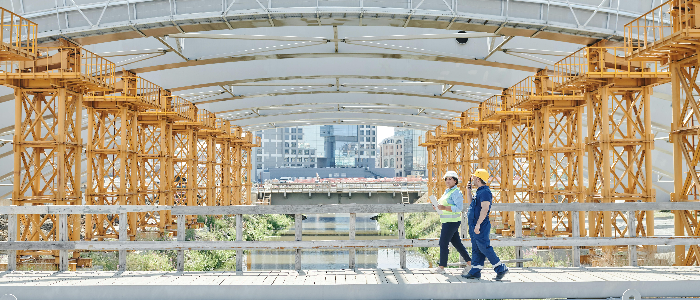
Site Inspection Report Template
Built to make your inspection report write-ups easier

Structural Integrity Report Template
Create structural integrity reports accurately and quickly
This assessment form was generated with Dashpivot software
Stay competitive - going digital with Dashpivot streamlines hours of work into a few clicks:
- Access, edit and complete your silica dust risk assessment from any device - mobile, tablet or computer.
- Print, download or send your silica dust risk assessment as perfectly formatted PDF documents with your company logo.
- Store your assessment forms securely online, where they can be searched and found in seconds
- Invite internal and external parties to see, edit and sign off on assessments online.
Sitemate builds best-in-class software tools for built world companies.
